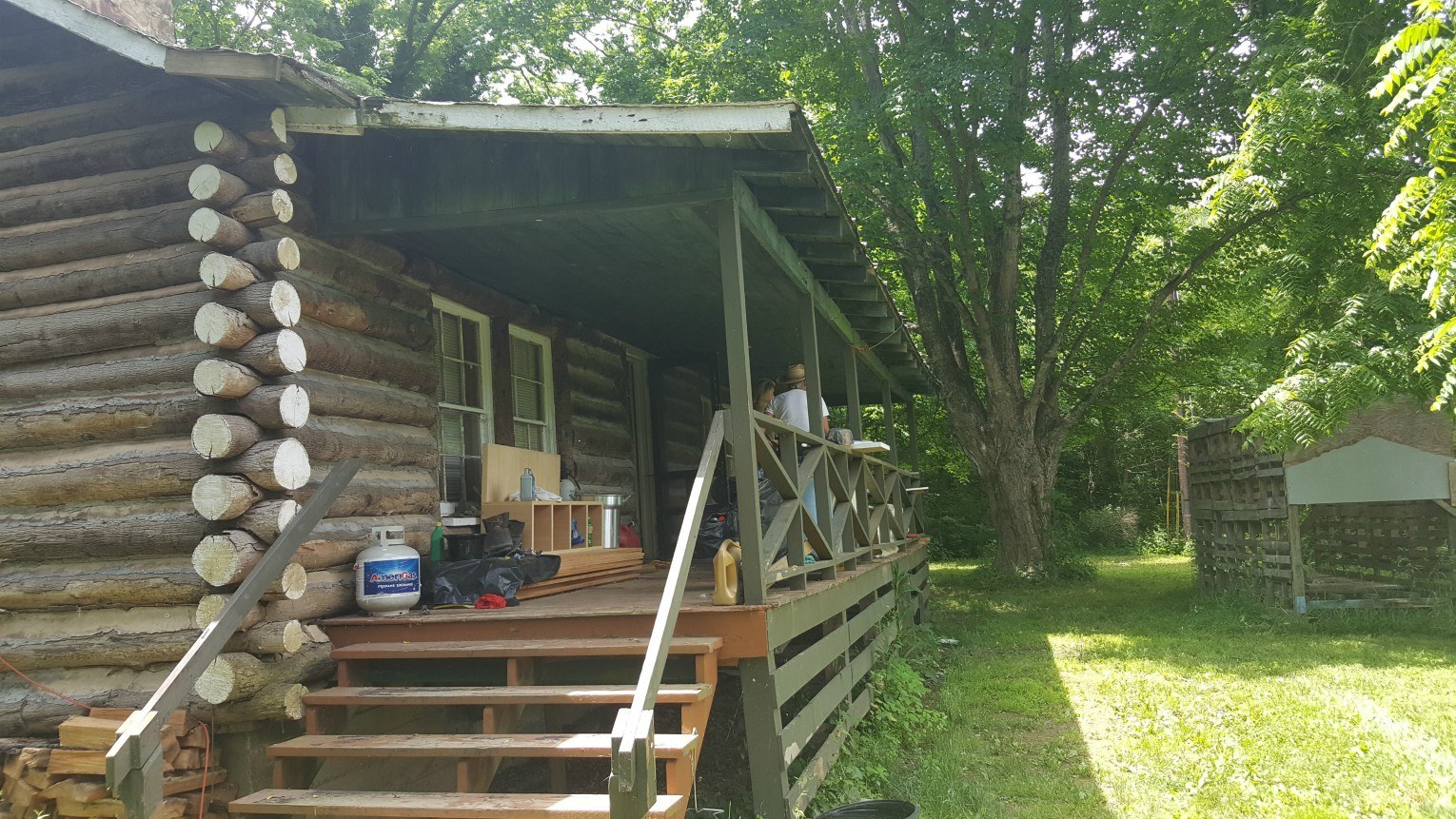Greenbrier River Lots For Sale By Owner – Millennials and Gen Z, in particular, have embraced the idea of second-hand shopping as a way to challenge consumerism, reduce waste, and express their individuality. But is this a reflection of reality? Or is it an illusion we’ve created, an idea we’ve accepted in order to make sense of a world that increasingly revolves around consumption and profit?
At the core of this idea lies the assumption that everything, no matter how unique or rare, can be exchanged. Many buyers are drawn to industries where they already have experience, while others may seek a business in an entirely new field in order to diversify their portfolio. Their inherent value comes not only from their physical characteristics but also from the values of durability and sustainability. With the rising costs of new products, especially in categories like electronics, clothing, and furniture, purchasing second-hand items can offer significant savings. The struggle is not in resisting the marketplace entirely, but in finding balance, in ensuring that the things that truly matter cannot be bought, sold, or traded. Due diligence is a crucial part of the process, where the buyer investigates the business thoroughly to ensure that there are no hidden liabilities, potential risks, or operational inefficiencies. For those considering buying a business, the appeal often lies in the opportunity to take over an existing operation and build upon its foundation. They are intended to last for a limited amount of time, after which they become outdated, broken, or no longer functional. Those who are born into privilege have the means to buy their way to the top, while others are left behind, forced to sell their time, energy, and even their dignity in order to survive. But even as we wrestle with the implications of living in a world where everything is for sale, we also see that this reality is not entirely negative. Success after the acquisition depends on a variety of factors, such as effective leadership, market conditions, and the buyer’s ability to make improvements and capitalize on growth opportunities. For sellers, online platforms can expand their reach to a global audience of potential buyers, increasing the chances of finding the right match for their business. As more and more people become concerned about the planet’s resources and the impact of consumerism on the environment, the concept of buying used goods has gained traction as a more sustainable alternative to purchasing new products. They also often help with legal and financial aspects, ensuring that the transaction is completed smoothly and efficiently. Whether through local thrift stores, online marketplaces, or garage sales, the option to buy pre-owned items has created a flourishing market that continues to grow. Self-help books and motivational speakers promise to sell us the tools to fix ourselves, to buy into a better version of who we could be. A home, a car, a piece of jewelry, a moment in time, a relationship — all of these things, at some point, become commodities. In some cases, selling second-hand items can be a way to make a significant profit, especially if the items are rare, vintage, or in high demand. This creative process not only gives new life to old objects but also encourages people to think outside the box when it comes to the things they buy and use.

Greenbrier River Waterfront Property Log Cabin for Sale Cabins for
Price historycoming soon listingssee crime & noise scoresshare favorite listings

The Overlook at Greenbrier Building Lots for Sale
Price historycoming soon listingssee crime & noise scoresshare favorite listings

270 Cochran Lane, Pence Springs, WV 24962 MLS GILMORE LANDING On The
Price historycoming soon listingssee crime & noise scoresshare favorite listings
Greenbrier River Waterfront Property Log Cabin for Sale
Price historycoming soon listingssee crime & noise scoresshare favorite listings

Waterfront Property, 2BR Log Cabin on 3.6 Acres fronts the Greenbrier
Price historycoming soon listingssee crime & noise scoresshare favorite listings

For Sale Lots on the Greenbrier River, Alderson WV
Price historycoming soon listingssee crime & noise scoresshare favorite listings

Land For Sale 5.10 +/ Acres Greenbrier
Price historycoming soon listingssee crime & noise scoresshare favorite listings

front view log cabin for sale on the greenbrier river Lewisburg WV
Price historycoming soon listingssee crime & noise scoresshare favorite listings

River Lots for Sale Greenbrier County WV
Price historycoming soon listingssee crime & noise scoresshare favorite listings

Denmar Road / Spice Run Road, Hillsboro, WV 24946 MLS SPICE RUN
Price historycoming soon listingssee crime & noise scoresshare favorite listings
There’s a certain art to selling something. The idea of “buying quality” is not just a luxury; it’s a mindset that encourages consumers to think beyond the momentary gratification of cheap purchases and focus instead on long-term value and satisfaction. Many people continue to resist the notion that everything has a price, and they fight to reclaim what is meaningful and valuable in life. They believe that certain things, like love, loyalty, and friendship, should be above the reach of commerce. They become part of the story of the buyer and the creator, connecting people to a tradition of excellence, heritage, and care. Social movements and grassroots organizations work tirelessly to provide resources and support to those who need it, often without expecting anything in return. Due diligence is a crucial part of the process, where the buyer investigates the business thoroughly to ensure that there are no hidden liabilities, potential risks, or operational inefficiencies. Each item was unique, and the quality was immediately apparent to the buyer. For many, purchasing second-hand goods is not only a practical and affordable choice but also an environmentally conscious one. A car might be sold because it no longer serves the needs of its owner, or perhaps the owner is simply ready for a change. The idea that everything has a price, and that everything is for sale, may seem like a grim outlook, but it’s one that has become increasingly true. The focus on longevity and reliability is what sets these goods apart from their mass-market counterparts. Social media platforms, for example, offer users a chance to buy into their own identity, to curate a version of themselves that is more appealing, more desirable, more marketable. When you look at something marked as “for sale,” you’re not only seeing an item; you’re seeing the possibility of a change, whether it’s the beginning of a new ownership, the end of a relationship with an object, or simply the result of a decision to move forward. The world may increasingly operate under the assumption that everything is for sale, but the human spirit, with its capacity for love, creativity, and compassion, refuses to be bought. Beyond financial savings and environmental impact, second-hand goods also offer a sense of nostalgia and connection to the past. With the rising costs of new products, especially in categories like electronics, clothing, and furniture, purchasing second-hand items can offer significant savings. Whether buying or selling, the process requires careful consideration, transparent communication, and a thorough understanding of both the financial and operational aspects of the business. The culture of buying second-hand goods is rapidly shifting in the modern world, particularly among younger generations. It’s about change, opportunity, and the negotiation of value.
For the buyer, there is the risk of inheriting a business with hidden problems or liabilities that were not disclosed during the due diligence process. At its core, “for sale” signifies that something is available for purchase, but beyond that, it tells a story of desire, exchange, and transition. Thrift stores often carry a wide variety of goods, from clothing and accessories to furniture, books, and electronics, and each item comes with its own story. The rise of minimalist living, which emphasizes owning fewer, more meaningful possessions, has played a role in this shift. Technological advancements and shifts in consumer behavior can also impact the types of businesses that buyers are interested in. Online platforms like Etsy, for example, have given artisans a global audience for their high-quality handmade goods. Similarly, a quality suit made from fine wool will age gracefully, developing a patina that speaks to its craftsmanship. In some cases, a business may look profitable but may be hiding significant underlying issues, such as declining sales, ineffective marketing strategies, or employee dissatisfaction. This has opened up new opportunities for small businesses to thrive and for consumers to access unique, well-made items that they might not have encountered otherwise. In addition to offering unique items and affordable prices, many second-hand stores also serve an important social and community function. They also have access to networks of potential buyers and sellers, which can help expedite the sale process and increase the chances of a successful transaction. Entrepreneurs can launch businesses from their homes, and freelancers can offer their skills to clients across the world. This desire for items with character and a story behind them has contributed to the growing appeal of second-hand goods. When we begin to view everything through the lens of commerce, it’s easy to lose sight of the things that make life worth living — the moments that aren’t for sale, the experiences that can’t be bought. This can manifest in the context of career, relationships, or personal goals. This practice is an essential aspect of sustainability, as it helps conserve resources and reduces the amount of waste sent to landfills. Quality goods for sale are not just limited to luxury items or high-end brands. While buying and selling second-hand items can come with its challenges, the rewards—both financially and environmentally—make it a worthwhile pursuit for many people. Books, records, and collectibles are also highly sought after in the second-hand market. With the rise of e-commerce, the accessibility of quality goods for sale has expanded exponentially.